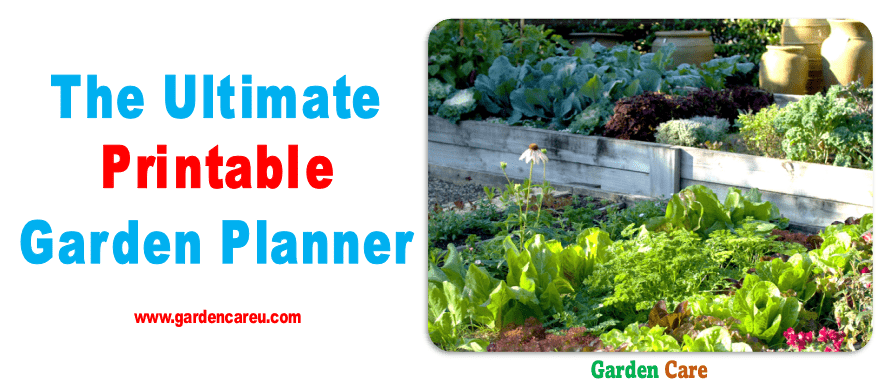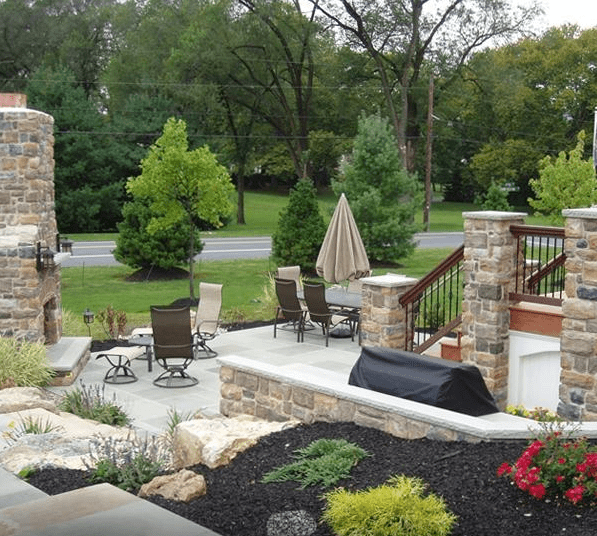The Ultimate Printable Garden Planner is a precise and detailed resource for organizing and managing your garden effectively. This planner offers a user-friendly interface and a comprehensive range of printable templates to track plant progress, create planting schedules, monitor tasks, and record essential gardening information.
With its intuitive design and customizable features, this garden planner is an ideal tool for both beginners and experienced gardeners to optimize their gardening experience. Having a well-organized garden can significantly enhance your gardening experience and increase productivity. The Ultimate Printable Garden Planner is a valuable resource that provides a range of printable templates to help you plan and manage your garden effectively.
Designed with user-friendliness in mind, this planner offers an intuitive interface and customizable features for tracking your plant progress, creating planting schedules, monitoring tasks, and recording crucial gardening information. Whether you’re a seasoned gardener or just starting out, this comprehensive garden planner is an essential tool for optimizing your gardening experience.

What Is A Printable Garden Planner?
The ultimate printable garden planner is a helpful tool designed to assist gardeners in organizing and optimizing their gardening efforts. With its user-friendly layout and comprehensive features, it enables users to plan their garden layout, track planting schedules, and monitor plant growth progress efficiently.
A printable garden planner is a handy tool that allows you to organize and manage your gardening tasks effectively. It is a downloadable or printable document that includes various templates, calendars, and trackers to help you plan, track, and monitor the progress of your garden. Whether you are an experienced gardener or a novice, a printable garden planner can be a game-changer for keeping your garden on track.
Benefits Of Using A Printable Garden Planner
Using a printable garden planner offers several benefits that can simplify your gardening experience and ensure successful results. Here are some key advantages:
1. Streamlined Organization: With a garden planner, you can easily keep track of your planting schedule, to-do lists, and maintenance tasks in one central place. This saves you time and helps you stay organized throughout the gardening season.
2. Improved Productivity: By mapping out your garden layout and mapping out your tasks in advance, you can optimize your time and resources. This means you can make the most of your gardening efforts and achieve higher productivity in your garden.
3. Seasonal Planning: A garden planner typically includes information about plant and harvest times based on your growing region. This enables you to plan your garden according to the appropriate seasons, ensuring optimal growing conditions and yielding a bountiful harvest.
4. Track Progress: One of the essential features of a printable garden planner is the ability to track the progress of your garden. From logging planting dates to noting the success or failure of specific varieties, this feature can help you learn from your experiences and make adjustments for future seasons.
Features To Look For In A Printable Garden Planner
When choosing a printable garden planner, it is essential to look for specific features that fit your gardening needs. Here are some key features to consider:
1. Customizable Pages: A good garden planner should allow you to customize the templates and pages to suit your preferences. This flexibility ensures that the planner accommodates your unique garden layout and planning style.
2. Seeds and Plants Inventory: Look for a garden planner that includes dedicated pages for keeping track of your garden inventory. This allows you to record the seeds, plants, and supplies you have on hand, preventing duplicate purchases and ensuring you have what you need when it’s time to garden.
3. Pest and Disease Tracker: To effectively combat pests and diseases in your garden, opt for a garden planner that includes a dedicated section for tracking and monitoring these issues. This allows you to implement timely solutions and maintain a healthy garden environment.
4. Garden Layout Design: A handy feature to have is a garden planner that offers a garden layout design template. This allows you to visually plan your garden beds, pathways, and other elements, ensuring an aesthetically pleasing and functional layout. Remember, a printable garden planner is designed to simplify your gardening tasks and enhance your overall gardening experience. By choosing one that meets your specific needs and preferences, you can enjoy a well-organized and productive garden season.
How To Effectively Plan Your Garden
Planning your garden effectively is essential for achieving a thriving and beautiful outdoor space. With the help of The Ultimate Printable Garden Planner, you can streamline the process and design a garden that meets your goals while making the most of your available space and resources. Follow these simple steps to create a well-organized and productive garden:
Determining Your Gardening Goals
Before diving into planning your garden, it’s important to determine your gardening goals. Take some time to consider what you hope to achieve with your garden. Do you want to grow your own vegetables and herbs? Create a serene and peaceful oasis? Attract bees and butterflies? Once you have a clear understanding of your goals, you can tailor your garden plan accordingly.
Assessing Your Available Space And Resources
Next, take stock of the space and resources you have available for your garden. Consider the size and layout of your outdoor area, the amount of sunlight it receives, and the quality of the soil. Assess any existing plants, structures, or obstacles that may impact your garden design. This evaluation will help you make informed decisions about what and where to plant.
Creating A Garden Layout
With your goals in mind and a good understanding of your available space, it’s time to create a garden layout. This step involves deciding what types of plants you want to include in your garden and where to place them. Consider the height, shape, and spacing requirements of different plants, as well as their compatibility with one another. A well-planned garden layout will not only look visually appealing but also optimize the use of space and promote healthy plant growth.
Scheduling Planting And Maintenance Tasks
Once you have your garden layout finalized, it’s important to schedule planting and maintenance tasks. Determine the best time to sow seeds or transplant seedlings based on your climate and the specific requirements of each plant. Create a calendar or use the planting schedule provided in The Ultimate Printable Garden Planner to keep track of important dates and tasks. Regularly tending to your garden, including watering, pruning, and fertilizing, is crucial for its overall health and success.
By following these steps and utilizing The Ultimate Printable Garden Planner, you’ll be well-equipped to plan and maintain a garden that brings you joy and beauty throughout the seasons. Happy gardening!
Choosing The Right Plants For Your Garden
When it comes to planning your garden, choosing the right plants is essential to ensure a successful and beautiful outcome. By carefully considering your climate and growing conditions, researching different plant options, and creating a plant wishlist, you can make informed choices that will thrive in your garden. Furthermore, organizing and tracking important plant information will help you keep everything in order. In this section, we will explore these key steps in detail to help you create a garden that thrives.
Considering Your Climate And Growing Conditions
Before selecting plants for your garden, it is crucial to take into account your local climate and the specific growing conditions in your area. Factors such as temperature, sunlight, soil type, and rainfall patterns can greatly impact the success of your plants. By researching which plants are suitable for your particular climate, you can ensure that they will thrive and create a vibrant and healthy garden.
Researching Different Plant Options
To make informed choices about the plants in your garden, it is essential to conduct thorough research on different plant options. Take the time to learn about the characteristics, care requirements, and growth habits of various plants. Consider factors such as their sunlight needs, water requirements, and soil preferences. By understanding the needs of each plant, you can determine if it is suitable for your garden and if it will complement the overall design.
Creating A Plant Wishlist
Once you have researched different plant options, it is time to create a plant wishlist. This can be an exciting step as you get to decide which plants you would love to have in your garden. Consider your preferences, including colors, textures, and scents. Think about the overall aesthetic you want to achieve and any themes you may want to incorporate. By creating a wishlist, you can keep track of the specific plants you desire, making it easier for shopping, ordering, or visiting a local nursery.
Organizing And Tracking Plant Information
To ensure that you stay organized and have all the necessary information readily available, it is essential to organize and track plant details. Consider creating a system where you can record important information such as the plant’s name, botanical name, preferred conditions, and any special care instructions. This system could be a garden planner notebook or a digital spreadsheet. Additionally, it can be helpful to include sections for planting dates, growth progress, and any other relevant observations. By keeping track of this information, you can monitor the health and progress of your plants, making adjustments as needed.
Maintaining And Caring For Your Garden
Your garden is a beautiful and thriving space that requires regular maintenance and care to ensure its health and productivity. Implementing proper watering and fertilizing techniques, developing a pest and disease management strategy, keeping track of garden maintenance tasks, and harvesting and preserving your garden produce are essential steps in maintaining and caring for your garden.
Implementing Proper Watering And Fertilizing Techniques
To maintain a healthy garden, it is crucial to provide the right amount of water and nutrients to your plants. Use a schedule to water your garden regularly, ensuring the soil remains moist but not waterlogged. Incorporating organic fertilizers can help replenish essential nutrients in the soil, promoting robust growth and vibrant blooms.
Developing A Pest And Disease Management Strategy
Pests and diseases can wreak havoc on your garden if left unchecked. Regularly inspect your plants for signs of infestation or disease and employ organic pest control methods such as handpicking pests or using natural deterrents. Implementing crop rotation and intercropping techniques can also help prevent the spread of diseases and pests.
Keeping Track Of Garden Maintenance Tasks
Maintaining a well-organized garden planner can help you stay on top of essential maintenance tasks. Create a checklist of tasks such as weeding, pruning, and mulching to ensure your garden remains in top condition. Tracking the progress of your plants and noting any issues can aid in addressing problems promptly.
Harvesting And Preserving Your Garden Produce
Harvesting your garden produce at peak ripeness ensures the best flavor and nutritional value. Utilize proper harvesting techniques to avoid damaging the plants and store your harvested produce in optimal conditions. Consider preserving surplus fruits and vegetables through methods such as canning, freezing, or drying to enjoy your garden’s bounty throughout the year.
Tips And Tricks For A Successful Garden
In order to have a successful garden, it’s essential to know the right tips and tricks that will help you achieve your gardening goals. From companion planting to crop rotation and seasonal gardening tips, here are some expert recommendations to ensure your gardening endeavors thrive.
Companion Planting
Companion planting involves growing different plants together to maximize their growth potential and natural pest control. For example, planting marigolds alongside tomatoes can help deter pests due to their strong fragrance, while radishes can be planted with cucumbers to prevent cucumber beetles. Refer to a companion planting guide to discover which pairings work best for your garden.
Crop Rotation
Crop rotation is a crucial practice that involves alternating the types of crops planted in specific areas to prevent soil depletion and minimize disease and pest issues. By rotating crops, you can maintain the fertility of the soil and reduce the likelihood of specific pests and diseases affecting your plants. Plan your garden layout and rotate crops based on their specific plant family to achieve optimal results.
Seasonal Gardening Tips
- Spring: Start by preparing your soil, planting frost-hardy vegetables, and removing any weeds.
- Summer: Keep your garden well-watered, protect your plants from excessive heat, and watch out for pests and diseases.
- Fall: Harvest your produce, plant cover crops or green manure, and clean up the garden to prepare for winter.
- Winter: Protect your garden from frost, consider indoor gardening, and plan for the upcoming growing season.
Troubleshooting Common Gardening Issues
- Pests: Use natural predators, neem oil, or diatomaceous earth to control pests without harming beneficial insects.
- Diseases: Practice good garden hygiene, such as cleaning tools and removing infected plants to prevent the spread of diseases.
- Weeds: Mulch your garden to prevent weed growth and consider using a garden hoe or hand weeder to remove weeds by hand.
- Nutrient Deficiencies: Get your soil tested periodically and amend it with organic fertilizers or compost to address any deficiencies.
Frequently Asked Questions On The Ultimate Printable Garden Planner
What Is The Most Productive Garden Layout?
A productive garden layout depends on various factors such as available space, sunlight, and soil type. Generally, a rectangular garden with straight rows and companion planting is effective. Proper spacing, efficient use of raised beds, and regular maintenance can enhance productivity.
What Is The Best Free Garden Planning App?
The best free garden planning app is “Garden Planner. ” It helps you design and plan your garden layout with various features like adding plants, arranging them, and tracking their growth progress.
How Much Does The Garden Planner App Cost?
The garden planner app costs $X. It offers an efficient and affordable solution for organizing and designing your garden. The app helps you keep track of planting schedules, layout plans, and even provides tips for optimal growth. Get started with your garden planning today!
What Is The Best Way To Plan A Garden Layout?
The best way to plan a garden layout is by considering the sunlight, soil, and space available. Sketch the layout, choosing plants suited to your climate and region. Position taller plants at the back and shorter ones at the front for visual appeal.
Regular maintenance is key for a flourishing garden.
Conclusion
The Ultimate Printable Garden Planner is designed to simplify and enhance your gardening experience. From planning to tracking progress, this planner offers valuable organizational tools for both beginners and experienced gardeners. With its user-friendly layout and customizable sections, you can stay on top of your gardening tasks and achieve the beautiful garden you’ve always dreamed of.
Start using the Ultimate Printable Garden Planner today and watch your garden thrive!


